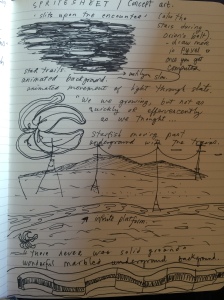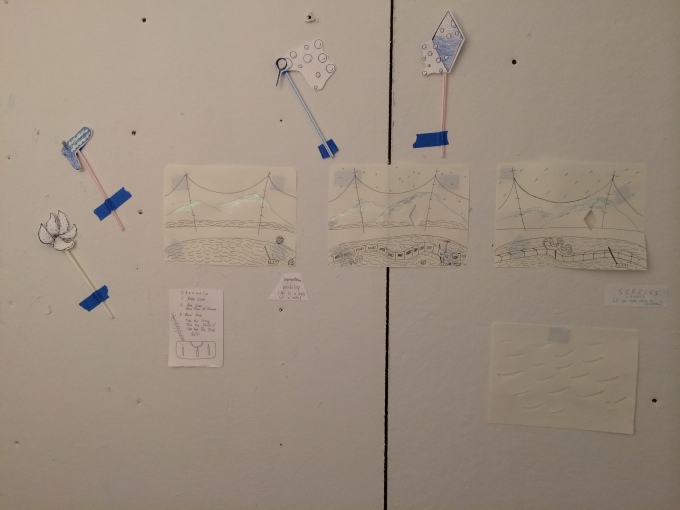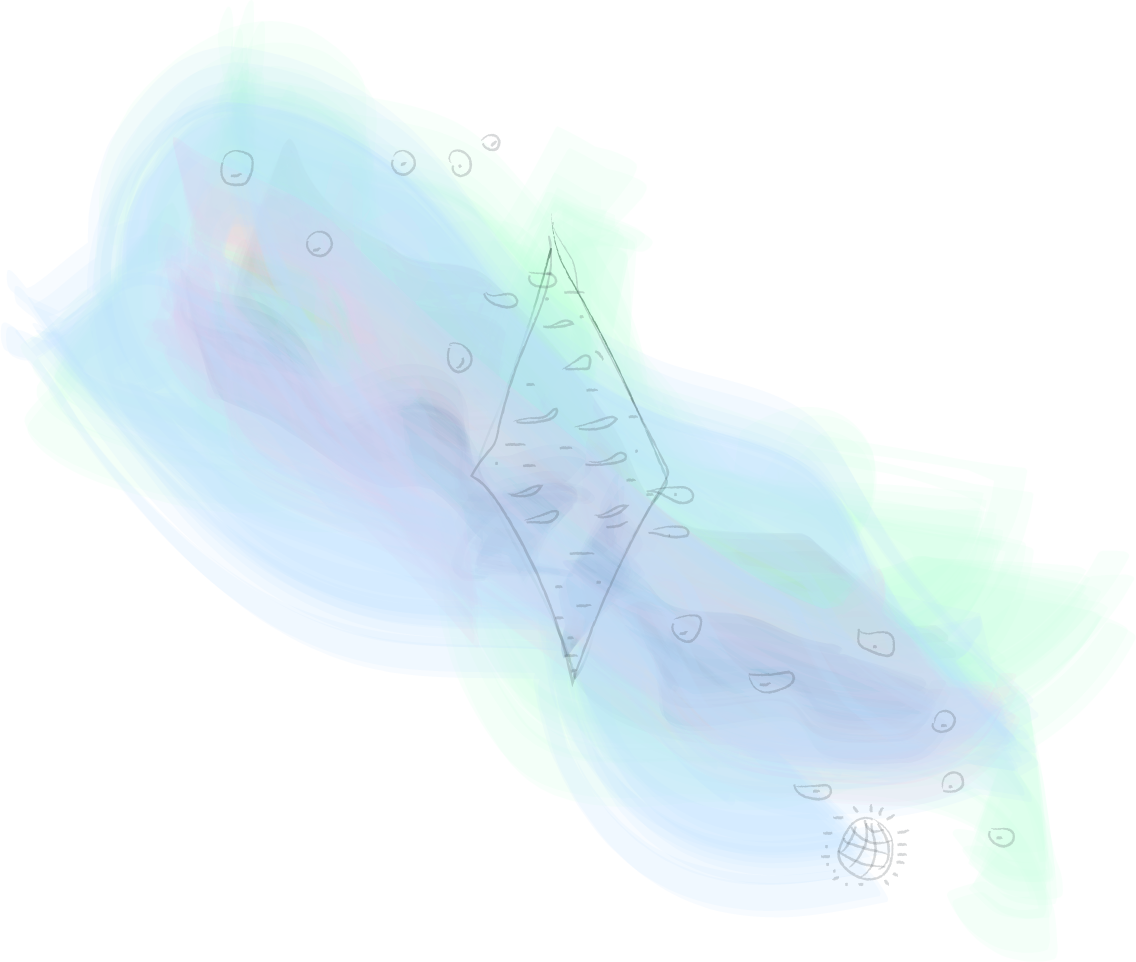
Early concept art for the game. This is an early sketch of how the text of the poem “A Silt Choreography” might read visually at the representational level.
MARCH 2016 CHECK-IN: post one for class Radical Game Design.
Building in Process
I am still in an early stage of building this game, making sprites in Adobe, et cetera. Have found myself working slowly in Unity. So this is where I am: still filling the gap between what I know about the engine and being able to put this game together!
Ethic
If it can be, I want this game to be an experiment in choreography. I’ve been thinking about movement as a form of incitement; as a political act. I’ve been thinking about how we perceive our own flight as a political optics, and hopefully also a haptic. I was interested in developing a game that careens towards a different kind of sight, one that encourages and facilitates a soft gaze, one that prioritizes / embodies a different kind of perception, undergirded with the rewards of moving towards something other than progress. I’m interested in eventually (and maybe not in this first attempt) building a game interface based on haptic (rather than representational/optical) cues.
Influences
This game is inspired by ideas in haptic visuality theory.
This game posits a kind of movement (proprioceptic) which departs from something like a formal gameplay style, which relies on the fixed subjectivity of the player (subject-object duality) to create flow. I want flow to be interrupted / disrupted in this game in order to break up the “given.”
Influences right now are Apichatpong’s film Cemetery of Splendor (2016), in which Apitchatpong uses layering techniques of incongruous text and image to say a lot about the violence of representation as crafted by colonialism, neoliberalism, capital and the Western eye.
I’m also looking a the Heavy Industries project / Young-Hae Chang. link to Heavy Industries. Thinking about how text can drive a game.
I’m Mona Hatoum’s work Measures of Distance as an example of a film that employs this haptic rubbing. Also, Fred Moten’s recent body of work from his talk “The Blur and Breathe Books” which is making the rounds right now. link to the talk at NYU this past February. A game designer who already implements these kinds of techniques within the video game medium is Bill Viola, whose game ‘The Night Journey’ incorporates blurred vision and prioritizes slow movement within the game space.
Problem Space / Solution Space*
*From Will Wright
It is impossible to visualize the kind of world that we can live in, that we would like to live in. Actually: It is so hard to dream into other temporalities. It is so hard to try. This is not about making being seeming (Massumi) but about shifting away from the primacy of this imagining of what living should look like.
Asset List
This is what the playtest looked like: The animated asset list at this stage (left to right) runs 1) starfish / cowhand boot 2) bubble blower 3) diamond bubble portal 4) stars that turn into star trails/bleeding stars, 5) radio dial 6) series of screens 7) also *potentially* a dial to switch the screens like a channel remote (actually, this should probably be not in your control at all– in order to communicate a roving disembodied affective spatiality). On the non-animated end, the additional assets that I need to build in Adobe Animate CC/Unity are: worms, disco balls, power line, stars, the train, landscape, platform path, the water, shells, starfish.
Notes from playtest:
Discovered out that I’ll have to decide whether or not to build the game with poetry audio built in to Unity or whether I should build it with the music accompaniment. Both will end up in the game, but I think adding music with ProTools later might be a good idea. Discovered that the mechanics I had in mind are pretty simple: For example, a major part of the game involves a collision of bubbles with a diamond portal into another world. They are meant to disappear through the hole, and they will, because a collision will make them disappear. As an endless runner, it resembles pretty closely the game that we build in the tutorials. It will be different in the mechanic in that there will be a screen that is hooked up to the speed of the player. Still trying to figure out what building that connection will entail.


